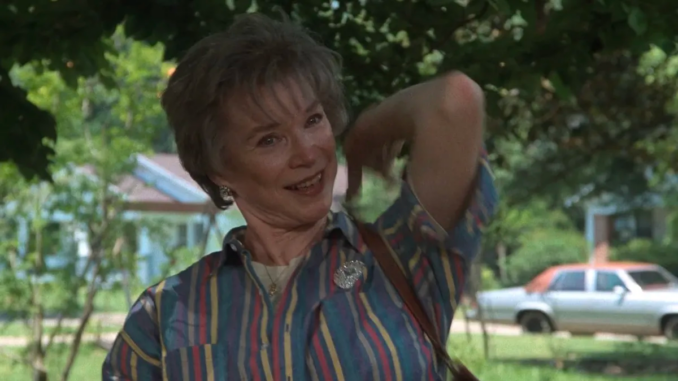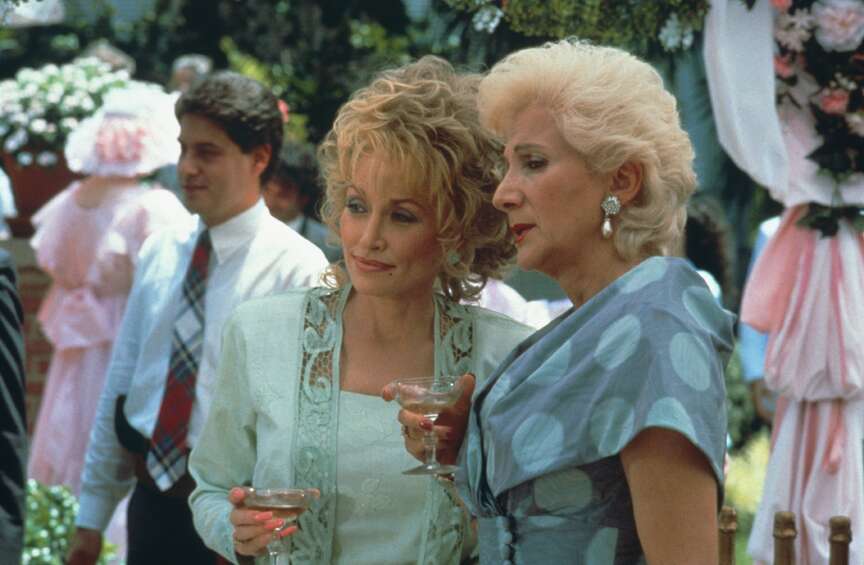
The South is freighted territory, thick with ghosts and nonsense, and performative professional Southerners who regularly lie to strangers, friends and sometimes themselves.
I was born in and have lived most of my life in states that were part of the Confederacy, but understand that in an internet-connected America pimpled with box stores and chain restaurants where everyone watches Netflix or Hulu or CNN or Fox, one can slip on a Southern identity like one slips on a seersucker suit.
While affected folkiness can be an effective tactic for anyone with a public-facing platform, be they Lonesome Rhodes or Sheriff Andy Taylor, it can also grate. Professional Southerners proliferate in certain businesses (including this one), injecting sentimentality and schmaltz and obscuring the common though complex humanity of people who happen to live below the Mason-Dixon line. “Southern” is a suspect adjective one should never apply to one’s own work. It is as much a ghetto-izer as it is a sales pitch.
That said, I do not hate Southern movies. (As Quentin Compson says, “I don’t. I don’t.”)
I dislike movies that present an idealized or reductive view of the South and the people who live here. Movies like “The Help” and “Driving Miss Daisy” and “Green Book.”
I used to loathe “Steel Magnolias,” the Herbert Ross movie returning to theaters briefly this week, courtesy of Fantom Events and participating theaters, in celebration of its 35th anniversary. I remember that when the movie was released in 1989, my reaction was so extreme that I decided not to write a review of it, instead farming the chore out to a female freelancer who concluded the film didn’t like men and was clueless about the South.
As I remember, my main objection to “Steel Magnolias” was a moral one. I understood it was inspired by a true story, the death of playwright Robert Harling’s younger sister Susan in 1985 from complications arising form her diabetes, and I found the idea ghoulish and exploitative. (One of the advertising tag lines used to market the movie was that it was “the funniest movie to make you cry.”)
Aside from that, I thought most of the Southern accents attempted in the movie were atrocious. Julia Roberts, from the Atlanta suburb of Smyrna, Ga., was the worst offender, adopting a dropped-R drawl that sounds more like Scarlett O’Hara than anyone from northwest Louisiana. (It has been reported that director Ross insisted on the accent.) Dolly Parton used her natural Appalachian accent, which was fine but out of place for the character. Sally Field’s tended to come and go — only Shirley MacLaine (a Richmond, Va., native) maintained a credible and consistent accent throughout.
I also bristled at the affected Southernness of the movie’s characters; I thought they and the Natchitoches, La., the film evoked (in the movie the town is referred to as “Chinquapin”) were
phony. Despite some fine performances, especially by MacLaine and Olympia Dukakis, nothing about “Steel Magnolias” felt honest (which is not the same thing as true). While the film was set in the ’80s, in some ways it feels as though it’s playing out in some idealized ’50s village.
While I didn’t grow up there like Harling did, I did know the town. I briefly considered going to college there, to Northwestern State University (now officially known as Northwestern State University of Louisiana). I remember they used to have the state high school academic fair there; after taking your calculus or French exam you could buy one of their famous meat pies and walk along the river.
Natchitoches is an odd town; though it’s technically situated in northwest Louisiana (actually it’s as close to the geographic center of the state as the Texas border) it doesn’t feel as influenced by east Texas as the rest of northwest Louisiana. This is in part because it was established in 1714 by Canadian explorer Louis Juchereau de St. Denis as the oldest permanent European settlement within the borders of the 1803 Louisiana Purchase, and settled by French traders and Canadian immigrants; by Creoles. Natchitoches looks and feels a lot more like New Orleans than Shreveport.
Up until the 1830s, when the Red River shifted course and left the city with an oxbow lake rather than a direct conduit to the Mississippi, Natchitoches was an important port, with east Texas cotton planters using it to ship their product to New Orleans.
It has been used in several movies — one of the nearby cotton plantations was a primary location in “12 Years a Slave” (2013). Reese Witherspoon made her film debut as a 14-year-old in Robert Mulligan’s 1991 film “Man in the Moon,” that was shot in and around the city.
But Chinquapin felt like the sort of Southern town that Disney’s imagineers might have conjured for Epcot Center. It felt gauzy and backlit, tenderly distressed in some places but not genuinely scruffy, a generic Thomas Kinkade twinkle town, touched here and there with golden light. Chinquapin is Natchitoches denatured; prettied up for Hollywood.
“Steel Magnolias” begins on the wedding day of Shelby (Roberts, post-“Mystic Pizza,” pre-“Pretty Woman”), the same day beauty school graduate Annelle Dupuy (Daryl Hannah), arrives to take a job as a “glamour technician” in the beauty salon Truvy Jones (Parton) runs out of her home. We watch as Annelle arrives via bus and wanders the pretty streets where Little Leaguers run en masse toward the park as Shelby’s father Drum (Tom Skerritt) flushes pigeons from the trees with a handgun.
Soon Shelby and her mother M’Lynn (Field) converge on Truvy’s parlor to get their hair done for the ceremony. They meet Annelle, who has a “past.” Annelle isn’t quite sure whether or not she is married, though she assures the ladies that her “personal tragedy will not interfere with my ability to do good hair.”
While at Truvy’s, Shelby nearly faints when she sees herself in the salon mirror; but this feint toward pre-wedding jitters is actually her falling into a hypoglycemic state that’s neutralized when M’Lynn forces a glass of juice down her throat. Shelby has Type 1 diabetes.
She’s also a nurse and presumably a grownup, and were it not for the real-life tragedy that underpins the story — Harling has said that he wrote the story that became the play and the movie “out of fury” — we might find it incredible that she doesn’t take better care of herself. Was it that hard to monitor one’s blood sugar in the 1980s?
I’ve known diabetics who suffered seizures like the ones Shelby suffers in the movie; one died because he couldn’t manage his condition. But when the film came out, I lacked that experience, and it seems stupid that Shelby’s character was taking care of babies in a hospital nursery.
The trip to Truvy’s also introduces us to Dukakis as Clairee Belcher, widow of the town’s former mayor, and MacLaine as “Ouiser” Boudreaux, M’Lynn’s cantankerous neighbor. This pair serves as a kind of Greek chorus to the proceedings and get most of the best lines — one thing I was not willing to credit when I first watched the film was Harling’s genuine gift for epigrammatic one-liners. (Such as Clairee’s philosophy: “What separates us from the animals is our ability to accessorize.”)
Soon Shelby is safely married off to young lawyer Jackson (Dylan McDermott), who like all the men in the movie presents as a pleasant enough stiff. Not even Sam Shepard, as Truvy’s contract laborer husband Spud, gets much traction — Harling might have been justified in cutting all the male roles. And soon, against doctor’s orders, she becomes pregnant (again, we could question the intelligence of Shelby were she not based on the writer’s dead-too-young sister).
While both her husband and father are overjoyed at the prospect of Shelby having a child, M’Lynn understands there’s a very real chance her daughter could die in childbirth. Turning to the tribunal of women at Truvy’s, they only offer the pragmatic suggestion that M’Lynn not borrow trouble. Shelby is determined to have the child, so all they can do is “focus on the joy of the situation.”
In 1989, this attitude infuriated me. I understand it now.
As it turns out, Shelby delivers Jackson Jr., but soon begins to experience kidney failure. He turns a year old and she begins dialysis. M’Lynn donates a kidney and Shelby resumes a normal life. But four months later …
After 35 years, there’s no need to invoke spoiler alerts. Life goes on for everyone but Shelby, and Annelle — who met her future husband at Shelby and Jackson’s wedding reception back on her first day in town — is now pregnant. She promises to name the child after Shelby, regardless of whether it’s a boy or a girl.

Sure, it’s melodrama.
And it is camp, which Susan Sontag once defined as “good because it’s awful.” Which means it’s actually good, but good in a way literal-minded sensibilities might not appreciate. There is a playfulness to “Steel Magnolias” that serious-minded people might miss — the whole production is closer to John Waters’ 1990 musical comedy romance “Cry-Baby” than “Terms of Endearment.”
And while it’s often decried — or at least labeled — as a “chick flick,” a kitschy weepie sprinkled with minor jokes and leavened by the knowledge that it was inspired by real events, “Steel Magnolias” is also an astute study of a shadow matriarchal structure that both runs society and lends support to the marginalized.
While I still have quibbles with the execution, I better know how female friendship and power dynamics work, and — from my admittedly male perspective — “Steel Magnolias” seems to get that right. Women can lend each other strength, and the relationships between these characters of varying ages and social classes feels fundamentally true.
That’s not to dismiss the flaws; whatever takes you out of a movie takes you out of a movie. I am taken out of movies that pretend to Southernness by poor accents and geographical indifference, such as when the Rocky Mountains loom on the horizon beyond Dardanelle in the 1969 version of “True Grit” — but I can accept color-blind casting, highly stylized sets and dream logic in other films. Line by line, “Steel Magnolias” is funny. In the end, that’s justification enough to watch it.
In 1989, Roger Ebert wrote it was “willing to sacrifice its overall impact for individual moments of humor, and while that leaves us without much to take home, you’ve got to hand it to them: The moments work.”
I would have been much harder on it back in the day. But now I think that assessment is just about perfect. “Steel Magnolias” isn’t really a Southern movie; it’s a Hollywood movie. And not a bad one.
